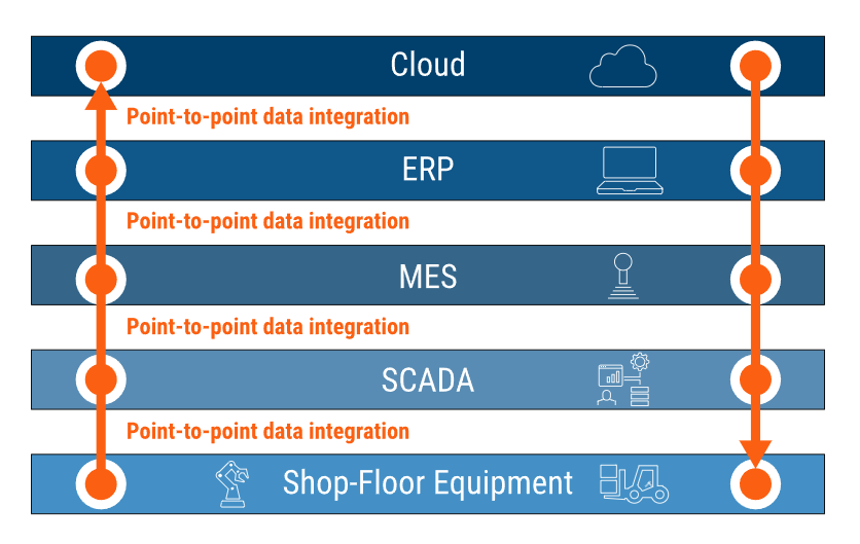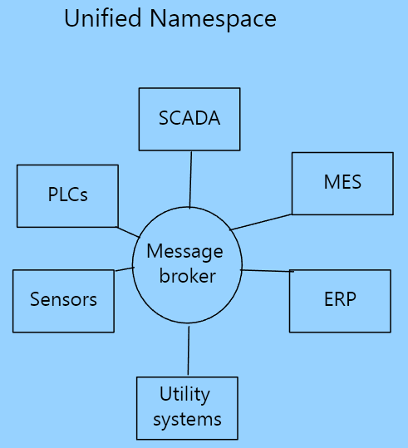Momenta's Take: Unified Namespace Architecture vs. Traditional Industrial Data Architecture
Ed Maguire

Streamlining Industrial Futures with Unified Namespace
Complex industrial businesses encounter a significant challenge: enabling diverse systems to communicate seamlessly. Traditionally, data sharing between Operational Technology and Information Technology has relied on customized one-to-one connections, leading to confusion and inefficiencies. Enter Unified Namespace—an emerging architectural approach poised to streamline industrial data communication in a lightweight and highly scalable manner. Unified Namespace is one of the fastest-growing architectures for Digital Industry.
Wrestling with Heterogeneity of Data
In a typical industrial operation, there are likely to be multiple devices, sensors, machines, and software systems from different manufacturers. Each device or system may have a unique way of identifying and addressing resources, and the lack of consistency can result in integration challenges, interrupted communications, and costly inefficiencies.
The industrial data challenges are not dissimilar to those faced in traditional data warehousing – when pulling data from disparate systems, it’s critical to map data to consistent definitions in order to achieve a “single view of the truth..” Hence, the evolution of Master Data Management (MDM) systems to enable standardized data definitions across the enterprise.
Unified Namespace is an event-driven architecture that operates on the principle that all data should be published and made available for consumption regardless of whether there is an immediate consumer. It is envisioned as a software layer for future industrial automation systems that acts as a centralized repository of all data collected from sensors, IIoT devices, machines, robotic solutions, and other system components. The role of Unified Namespace is analogous to MDM – it seeks to standardize data in industrial and manufacturing settings to enable communications to flow seamlessly between and across heterogeneous devices and systems in real time.
The Limitations of Traditional Industrial Data Architecture
Conventional industrial data architecture is built on a hierarchical model, where various platforms – from sensors and actuators to PLCs, SCADA systems, MES, and ERP systems – exchange data with adjacent layers. However, this approach presents multiple drawbacks. It necessitates numerous point-to-point communications, resulting in costly inefficiencies. Data formats frequently lack compatibility, leading to inconsistent data quality and service levels. Additionally, scalability becomes a formidable challenge.

Source: HiveMQ
A Hub-and-Spoke Architecture Designed for the Future
The Unified Namespace is built upon a hub-and-spoke architecture, which capitalizes on a centralized message broker, often utilizing MQTTor Apache Kafka. This design is inherently scalable and facilitates easy node connection within the network. A standard Unified Namespace encompasses physical data storage, an API that grants all software applications and systems access to stored data, and a blend of systems collecting data from network components that cannot directly connect to the UNS. The system exclusively presents the current, real-time status of each process, application, or data stream – for historical analysis, raw data must be gathered and stored in a data lake to enable subsequent evaluation.

Source: United Manufacturing Hub
Why Unified Namespace is Important and Why Businesses Should Care
Unified Namespace offers a range of benefits for industrial adopters. By providing a standardized way to name and access resources, devices and systems from different manufacturers can more easily understand and communicate with each other. This approach simplifies complexity, allowing for more rapid deployment, less reliance on costly customization, and provides the ability to future-proof operations. Additionally, the consistent model improves the experience for developers and users while enabling a greater ability to leverage data for analysis.
Unified Namespace is one of the fastest-growing architectures for Digital Industry, and several industry players are looking to advance adoption, like Momenta portfolio company HighByte. Like any new software approach, there are significant upfront costs and considerations, but speed, consistency, and scalability benefits should pay significant dividends over time. In a realm where industrial progress hinges on efficient communication, Unified Namespace presents a vital stepping stone toward an optimized future.

Momenta is the leading Industrial Impact venture capital + growth firm. We accelerate entrepreneurs and leaders devoted to the digitization of energy, manufacturing, smart spaces, and supply chains. Since 2012, our team of deep industry operators have made over 100 investments in entrepreneurs and helped scale over 150 industry leaders via our award-winning executive search and strategic advisory practices.



